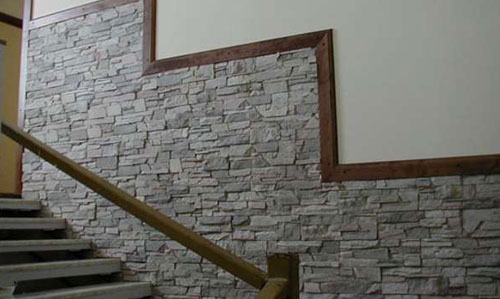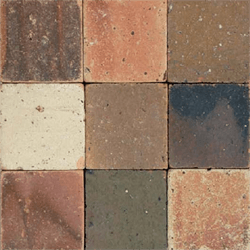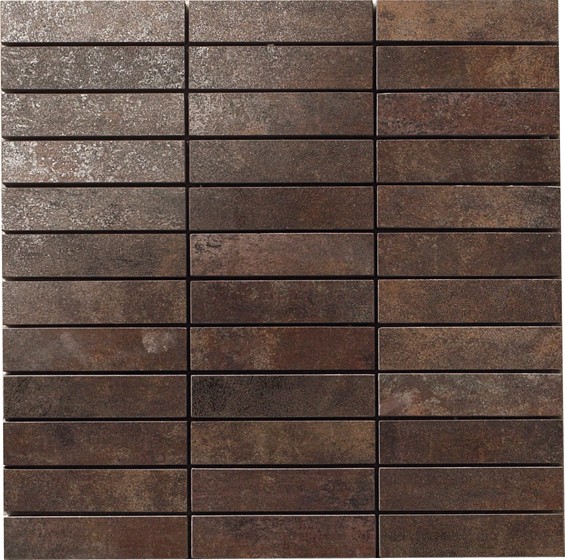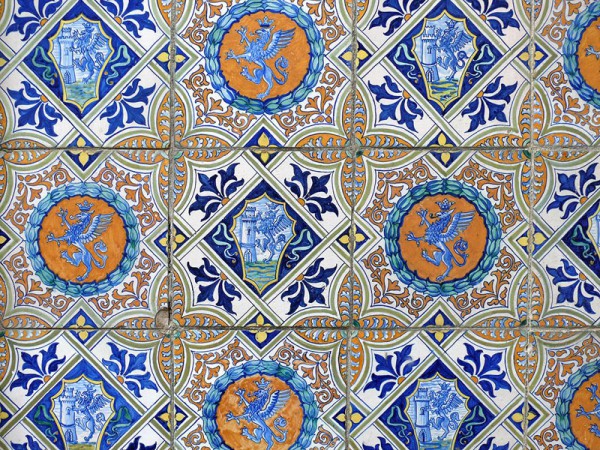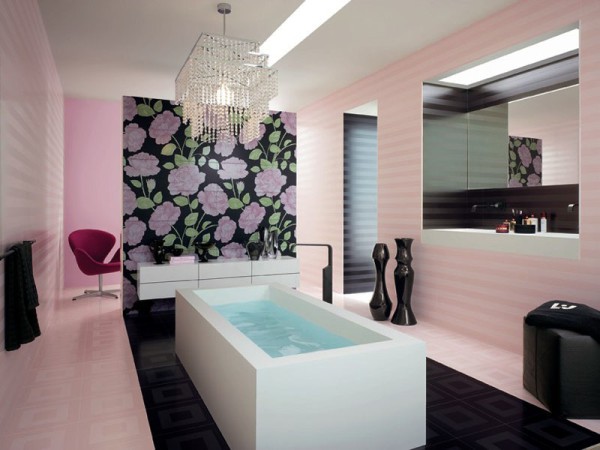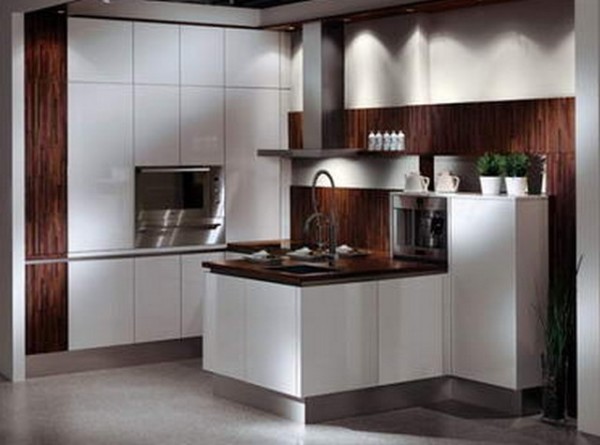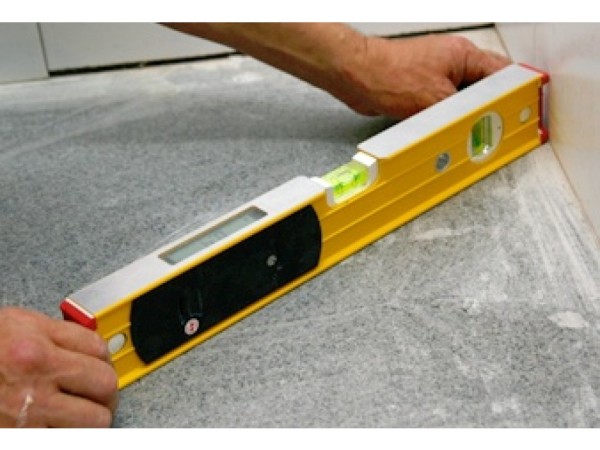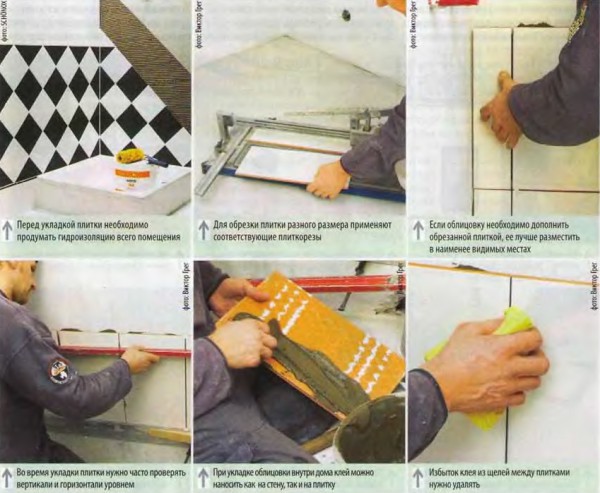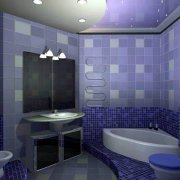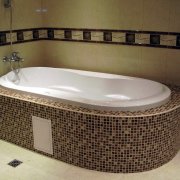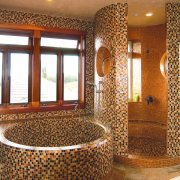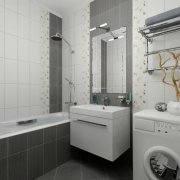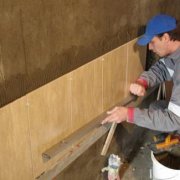Ceramic stone tiles for interior decoration: key features
Finishing work in any room is the most important. The cozy atmosphere and comfortable atmosphere depend on them to a greater extent.
Despite the large amount of finishing material, wall decoration with ceramic tiles is very popular, there are reasons for this.
The content of the article
Types of finishing material
In the construction industry, this type finishing material Not only popular, but also has a variety of color shades and sizes. There are different imitations of natural stones.
It became possible to place photographs and various paintings on the tile, which, after masonry, are collected on the surface. The photo shows different versions of the tile.
There are several types of ceramic tiles:
- Earthenware.
- Tile Cotto.
- Porcelain tile.
- Clinker.
- Majolica.
- Cottoforte.
Note. According to their technical properties, they are not too different from each other, but they have differences in the manufacturing process.
Earthenware Ceramic Tile
Earthenware tile appeared first in the construction market and was successfully popular. At the moment, this type of ceramic tile is gradually fading into the background, as it has a very small selection of design shades and surface textures.
It was used both on wall surfaces and on the floor.
Cotto in the interior, material features
This type of ceramic tile is made of clay dough, which is exposed to high temperature.
It has a porous structure and a variety of forms:
- Square.
- Rectangular
- Hexagonal.
- Diamond-shaped and so on.
Note. Quite often, the walls were finished with ceramic tiles of this particular type. It is also covered with enamel, which creates the spirit of antiquity in the room.
As a rule, the material is produced in warm shades that resemble the color of clay:
- Brown.
- Red.
- Yellow.
- Pink.
The advantages of this type can be safely attributed to its wear resistance. It is not washable, and the service life is at least 20-25 years, durable and reliable.
Porcelain tiles in the interior and its features
This type of ceramic tile in its structure and manufacturing method is more like fake diamond. It has excellent strength and durability.
Its size is:
- 60x60 cm;
- 90x90 cm and so on.
These sizes are the most popular. Due to this and the technical properties of porcelain, it is laid on the floor in the room or in the outer cladding.
Clinker ceramics in the interior and its characteristics
Clinker tile has recently become very popular. It is practical and reliable.
Due to the fact that it is made of clay, it has high strength using the extrusion process.
Benefits:
- Also, do not forget about the variety of forms and design. It can be found in the form of mosaics (tiles 10x10 mm) and up to standard tiles (30x20 cm, 30x30 cm, 60x60 cm).
- The surface of ceramic tiles can be decorated in different ways. There is a matte and glossy, which, in addition to a protective film, is covered with a layer of thin glass.
There are also imitations of natural stones or bricks.
Clinker ceramic tiles have several options:
- For interior decoration.
- For exterior decoration.
- For base trim.
This is the most common ceramic tile for wall decoration in the hallway. It has a high rate of wear resistance and abrasion.
Its service life is at least 20-25 years. With proper handling, clinker ceramic tiles can last even longer.
Majolica
This is a type of ceramic tile, which at the moment is decorated with all rooms with high humidity and temperature extremes.
Namely:
- Bathrooms.
- Bathrooms
- Kitchen areas.
- Saunas.
- Pools and so on.
It has a large selection of colors and textures. The price for it is quite affordable, while the quality of the material is high.
Cottoforte
This type of ceramic tile is significantly different from the previous one in its increased strength and reliability. It also has a large selection of sizes and colors, but most often due to its high density it is used on the floor.
The advantages of ceramic tiles in the finishing work
The main and main advantage of this finishing material will be its practicality. The surface of the tile of any kind is not able to absorb dust and various contaminants.
It is quite simply cleaned.
Tip. To clean the surface of ceramic tiles of any type, you will need to use ordinary detergent and a soft sponge.
Characteristics:
- Ceramic tiles are durable - the average life is 15-25 years. Mounting it is quite easy and you can do the whole process with your own hands.
Only previously it is necessary to qualitatively prepare the surface for this. - The material is moisture resistant and is widely used in rooms with high humidity and strong temperature extremes.
- Also do not forget the strength of ceramic tiles. It is able to withstand quite large loads and does not deform under physical and mechanical stresses.
Ceramic tiles are wear-resistant. She retains its original appearance for a long time.
The only thing to consider is that some types of tiles do not tolerate abrasive products on their surface. They erase the protective coating.
Where can I use ceramic tiles?
Due to the fact that ceramic tiles have a wide variety of shades and sizes and excellent technical characteristics, such a finishing material can be used in any room. Quite often, ceramic tiles are used in the decoration of the walls of the hallway, kitchen apron, floor surface, fireplaces and much more.
Ceramic tiles are varied. You can perform it completely the entire surface or its individual part. Use different colors and textures of this material.
Note. As for fireplaces, ceramic tiles for brick for interior decoration are as popular as its other types (imitation of natural stones).
Preparatory work on the surface before installing ceramic tiles
Hallway wall decoration with ceramic tiles begins with surface preparation. To do this, level the surface.
If it is smooth, then you need to evaluate its defects:
- With a plastered surface, you need to tap on the layer of plaster to identify those places in which the material has moved away from the surface.
- If everything is normal, then the surface is thoroughly cleaned with detergents.
Since ceramic tile can only be mounted on a flat surface, it is possible to carry out such work with:
- Drywall.
- Plasters.
The cleanest and fastest way to level the surface is the use of drywall.
For its installation you will need:
- Metal profiles.
- Self-tapping screws for metal.
- Dowels.
- Hammer drill.
- Screwdriver.
Tip. Initially, a profile frame is mounted on the surface, sheets of drywall are already attached to it. Joints of the material are glued with a construction tape and then puttied.
Plaster is a more “dirty” way to level the surface. After such work, there is always a lot of construction waste.
For the alignment process you will need:
- Starting plaster.
- The finish line.
- 2 spatulas.
- Sandpaper.
- Level.
- Building grid.
First of all, starting plaster is applied to the surface, after drying each layer is treated with sandpaper. Then, in the works, finishing plaster is used, which is subjected to a similar treatment.
The process of installing ceramic tiles
In order to carry out the installation of ceramic tiles there is a specific instruction. If the surface is well prepared, then such work is quite simple.
First of all, the surface is primed and given time for complete drying.
After that you will need:
- Adhesive or cement mortar.
- Putty knife.
- Level.
- Ceramic tile.
- Cruciform lighthouses.
- Decorative putty.
Tip. To strengthen the surface, you can use a wire reinforcement mesh on the surface, which is mounted on the surface during the leveling work.
Cement mortar is prepared independently.
For this you need:
- Cement.
- Sand.
- Water.
Stages:
- It is necessary to carry out such a process in a special container using a construction mixer. Do not immediately knead a large amount of solution, since the composition can dry very quickly and lose its qualities and properties.
- After that, cement mortar is applied to the surface, in the place where the ceramic tile will be mounted.
Tip. If there is no time and you want to finish the finishing work faster, it is better to use special glue, which in most cases is sold ready-made.
- Do not immediately put a lot of such a tool, since it is also applied to the inner surface of the ceramic tile. A uniform distance between each tile is ensured by the use of cross-shaped beacons, which are inserted into the seams.
Each row of ceramic tiles before laying the next should be well fixed to the surface. As soon as the finishing work is completed, then all the seams are decorated with putty of the required shade.
If you have questions, you can watch a video showing an example of such work. There is nothing complicated in this process and everyone can cope with it, thanks to the instructions.
